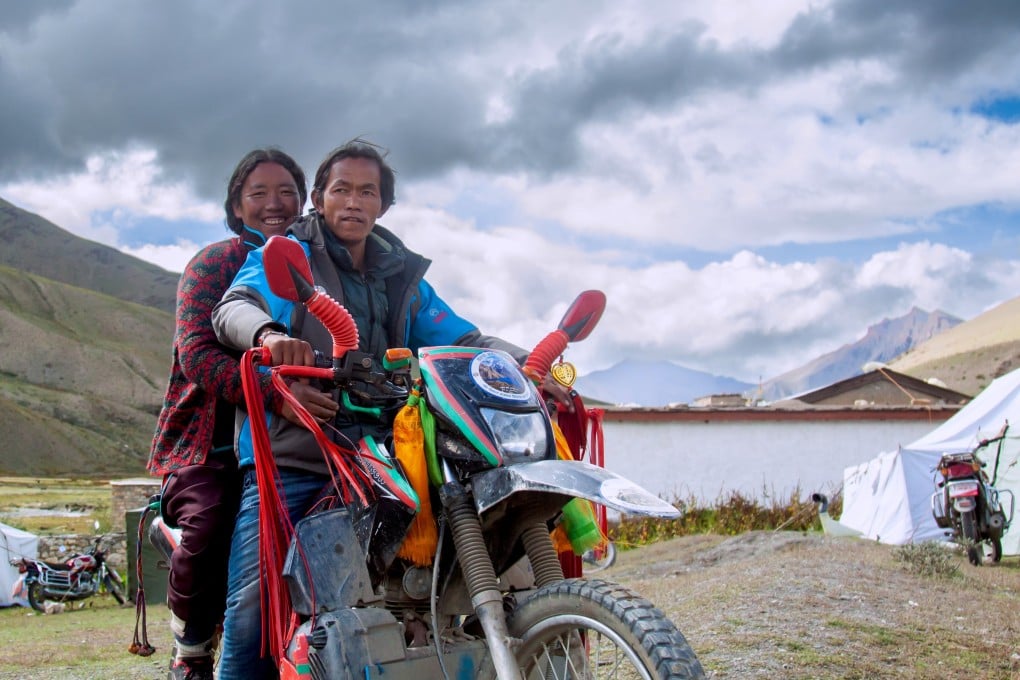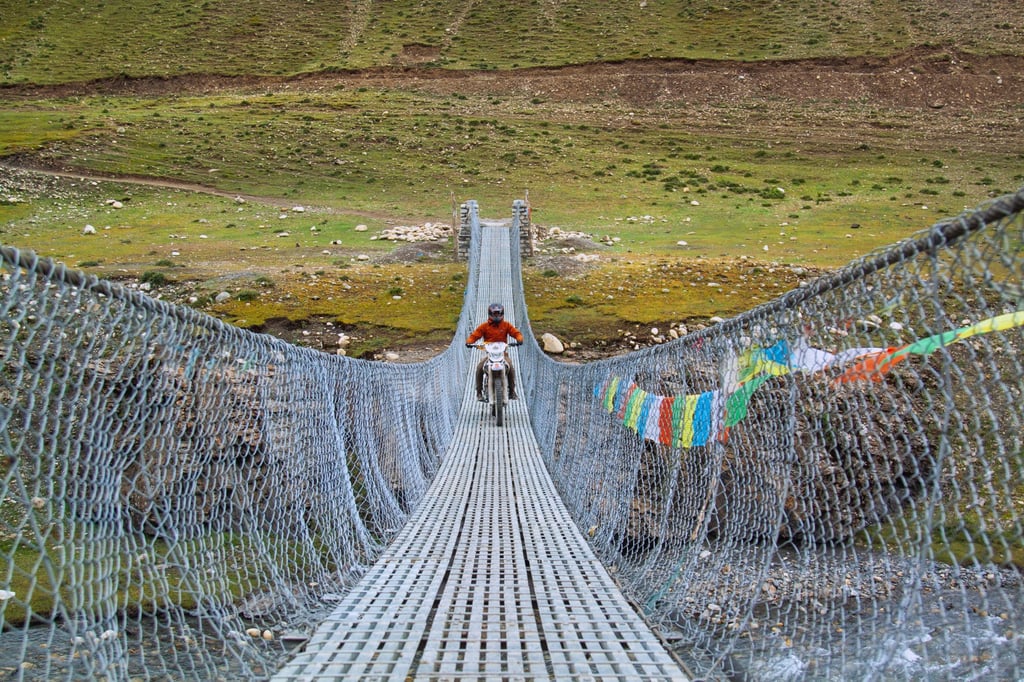Farmers trade fungi for motorbikes in rural Nepal, but mushrooming road use threatens rural ways
- The proceeds from yarsagumba fungus have bought mod cons and motorbikes from China to remote Dolpo, bringing convenience – as well as noise, pollution and uncertainty

The village appears like a mirage, within reach yet vexingly distant, after a hurried, three-day trek through Dolpa, the largest, but third-most sparsely peopled of Nepal’s 77 districts. Size: 7,890 sq km. Population: roughly 43,000. Altitude: up to 7,625 metres. Across the border: China.
In Dolpo, the culturally Tibetan pocket of Dolpa, atop the mud walls of the rammed-earth houses, flat roofs are stacked with firewood and hay, for winter. The 1,000-year-old Ribo Bumpa Monastery stands sentinel over the village of Dho, near the banks of the Tarap River; barren mountain slopes soar on both sides of the valley.
All is as one would expect for an isolated Himalayan community far removed from modernity. That is until a deafening roar pierces the bucolic calm and forces us off the trail to make way for a flashy dirt bike raking up a plume of dust in its wake as it speeds by. It is a shock to see a modern motorcycle in a barren, agro-pastoral region with limited economic activity and no roads, in a country where bike imports are exorbitantly taxed.

Then, more: light frames, narrow wheels with thick tyres, advanced suspension systems to handle the terrain. Less sophisticated bikes also appear – decorated with Tibetan motifs including prayer flags, red tassels and ceremonial silk scarves painted with dragons and eternal knots – ridden by men in traditional attire.
“In the Himalayan region, it is becoming quite common to ride such dirt bikes,” says Tashi Chosang, a teacher from nearby Charka. “There are about 45 in my village. All of them were bought from China in the last few years.”
American novelist and naturalist Peter Matthiessen’s account of his travels with zoologist George Schaller in The Snow Leopard (1978) portrayed Dolpo as a land where time stands still, big cats lurk, sacred monasteries guard lonely mountain slopes and prayer flags flutter on desolate passes. The arduous journey the pair endured, from the lowlands to the gateway of the “timeless land”, has since been circumvented by a short flight, but beyond that not much has changed.
Even when Nepal began aggressively building roads 50 years ago, access to Dolpo remained almost impossible. A track finally climbed the 2,000 metres to Dolpa district headquarters, Dunai, on the southern edge of the region, in 2018, making it the penultimate administrative district to be connected to the national road network.
